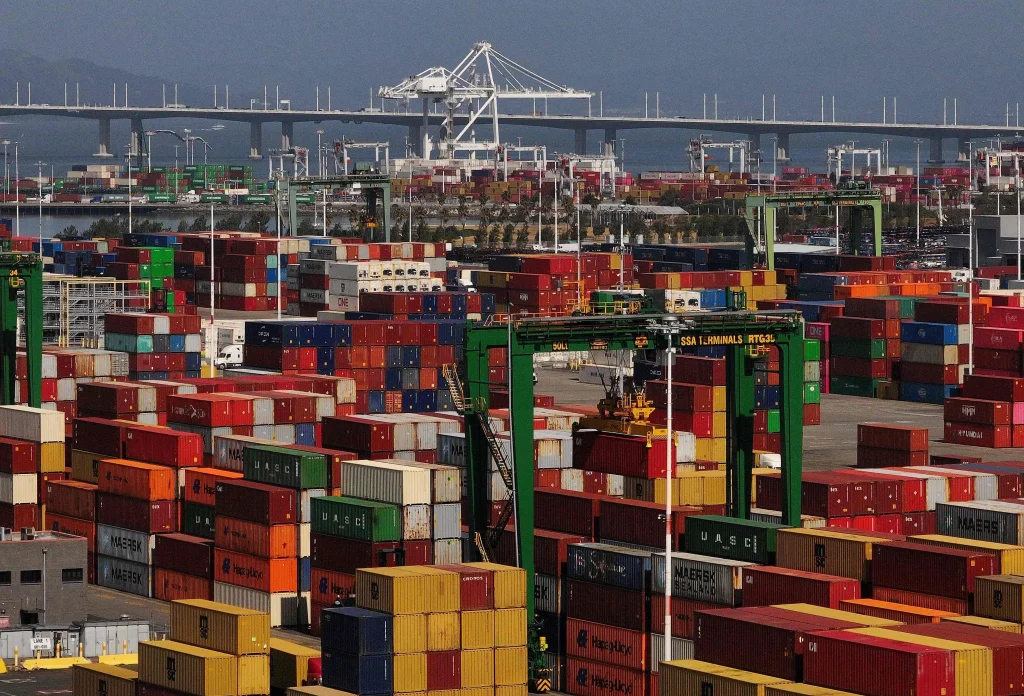HISTORY has a habit of repeating itself, particularly with recent shifts in global trade and financial instability in developing economies.
When the Latin American debt crisis hit in the 1980s, it was sparked by oil price shocks and deteriorating trade terms, and then made worse by an over-reliance on foreign, US dollar-denominated debt. Decades later, the 1997 Asian financial crisis followed a similar script, with unsustainable current account deficits and risky currency exposures linked to trade flows and volatile capital. Even the euro area debt crisis was rooted, in part, in persistent regional trade imbalances that pushed sovereigns and banks to the brink.
These were no accidents or stand-alone events. They reveal a persistent threat that trade and, crucially, trade finance, can amplify underlying financial sector weaknesses. Currency mismatches, precarious dependence on the US dollar and concentrated credit risks often lie dormant – until a trade shock wakes them up.
Familiar tremors in today’s landscape
Vulnerabilities from trade shocks or a new global trade regime ripple outward, potentially crippling financial systems and inflicting serious harm on the broader economy.
The echoes of the Covid-19 pandemic are still felt in fractured supply chains, brutally exposing the risks of narrow export bases. Russia’s invasion of Ukraine sent food and energy prices soaring, hammering the terms of trade for import-dependent nations. The financial sector fallout is increasingly visible, not least in the growing risk aversion surrounding trade finance.
Data confirms the pressure points. According to the Bank for International Settlements (BIS), over 55 per cent of cross-border bank lending to emerging markets and developing economies is still in US dollars, leaving trade finance exceptionally vulnerable to exchange rate volatility and sudden dollar liquidity crunches. The World Bank estimates the trade finance gap in sub-Saharan Africa alone now exceeds US$100 billion – a 30 per cent increase since 2019.
BT in your inbox

Start and end each day with the latest news stories and analyses delivered straight to your inbox.
These figures reflect real economic strain. Central banks from Ghana, Zambia and Ethiopia report rising non-performing loans, particularly in trade-dependent sectors. At the same time, regulators are seeing tighter credit conditions and weakening bank capital adequacy – flashing indicators that trade-related stress is embedding into bank balance sheets.
The United Nations Conference on Trade and Development warns that smaller economies are especially more vulnerable to tariffs, making financial risk management that much harder.
While the high-level dangers – such as economic slowdowns, inflation spikes and market volatility – are well-flagged, there is less clarity on how these macrofinancial risks translate into practical changes in financial-sector supervision.
How are examination priorities shifting? Are data requests becoming more granular or frequent, specifically for trade exposures? Can there be a more explicit, forward-leaning approach that reassures exporters, importers, and bank and non-bank lenders?
Financial sector supervisors do not set trade policy, but ensure trade shocks do not capsize the domestic financial system. This requires moving beyond routine oversight to a pre-emptive, globally aware strategy.
Getting ahead of the shock waves
In many cases, financial supervisors are still catching up. There is an urgent need to monitor trade-linked exposures more closely, from foreign exchange lending and trade credit exposures to cross-border liquidity reliance, especially for key banks.
This means that real-time dashboards need to fuse bank and non-bank data with external stress indicators: terms-of-trade shifts, commodity volatility, shipping woes and, crucially, fraying correspondent banking relationships vital for trade payments (a challenge recently acute in parts of East Africa).
Banks and non-banks must also be tested against severe trade and FX shock core scenarios, not just edge cases. What happens if a major export market collapses or access to offshore US dollar funding suddenly dries up? Supervisors must start asking those questions now, not after the damage is done.
Increased transparency is vital. Uncertainty fuels fear, and clear, consistent disclosure from banks and large firms on FX exposures, maturity mismatches and hedging must become a proactive standard practice. Reliable data helps markets spot emerging vulnerabilities early. Meanwhile, regional regulators must strengthen cross-border cooperation, particularly where banking and non-bank groups operate across multiple markets.
Above all, financial-sector supervisors must communicate and signal their assessments and actions. Forward guidance on expectations (such as FX liquidity planning), planned stress tests or available resilience tools anchors market expectations and builds confidence. Proactive signalling shows preparedness, not panic.
Implementing this is tough where resources are thin, mandates fragmented or politics intrusive. Understaffing and technical gaps are real constraints. However, solutions exist: regional pooling of functions, vibrant peer-learning networks and targeted technical assistance from bodies like the Toronto Centre, the International Monetary Fund and the BIS, focused on practical tools and diagnostics.
The next financial storm in many developing economies might be brewed not by a domestic credit boom, but by turbulent global trade, commodity swings or disruptions in US dollar funding critical for trade finance. For supervisors, the imperative is not predicting the next shock, but building resilience to withstand it. This demands a shift from compliance or standards-based checking to proactive risk management, informed by global tremors and grounded in local current account vulnerabilities. Preparedness, not prediction, is the watchword. OMFIF
The writer is a visiting professor at the National Council of Applied Economic Research, senior non-resident adviser at the Bank of England, senior adviser of the International Forum of Sovereign Wealth Funds and distinguished fellow at the Observer Research Foundation America. He was previously at the Bank for International Settlements, the International Monetary Fund and the Reserve Bank of India.
This was first published by the Official Monetary and Financial Institutions Forum.


